In a faulty barometer some air occupying the space over mercury column. How can the air pressure be correctly determined with this faulty barometer?
Let the length of mercury column =h1, and that of air column over mercury =l1 now the barometer tube is raised a little still keeping the open end dipped into mercury. Let in this case,the length of mercury column=h2, and that of air column over mercury =l2.
If the true reading of the air pressure is H, and the area of cross section of the tube is a, then from Boyle.s law
(H−h1)l1a=(H−h2)l2aor,H=h1l1−h2l2l1−l2
Hence, measuring h1,h2,l1,l2 the correct atmospheric pressure can be find out.
Topper's Solved these Questions
- BOOK - CHHAYA PUBLICATIONCHAPTER - EXPANSION OF GASESEXERCISE - EXERCISE (MULTIPLE CHOICE QUESTION)20videos
EXPANSION OF GASES
- BOOK - CHHAYA PUBLICATIONCHAPTER - EXPANSION OF GASESEXERCISE - EXERCISE (Very Short Answer Type Question)6videos
EXPANSION OF GASES
- BOOK - CHHAYA PUBLICATIONCHAPTER - EXPANSION OF GASESEXERCISE - CBSE Scanner1videos
EXPANSION OF GASES
- BOOK - CHHAYA PUBLICATIONCHAPTER - ELASTICITY EXERCISE - CBSE SCANNER10videos
ELASTICITY
- BOOK - CHHAYA PUBLICATIONCHAPTER - EXPANSION OF SOLIDS AND LIQUIDSEXERCISE - CBSE SCANNER2videos
EXPANSION OF SOLIDS AND LIQUIDS
Similar Questions
the height of mercury in a fauilty barometer is 75 cm and the tube above mercury is 10 cm long. The correct barometer reading is 76 cm. when the faulty barometer reads 74 cm, find the true barometer reading .
View SolutionThe reading of a barometer containing some air above the mercury column is 73cm while that of a correct one is 76cm. If the tube of the faulty barometer is pushed down into mercury until volume of air in it is reduced to half, the reading shown by it will be:
View Solution
Knowledge Check
- Question 1 - Select One
A barometer is an instrument that is used for the measurement of pressure The construction of the barometer is as follows:
A thin narrow calibrated capillary tube is filled to the brim with a liquid such as mercury and is inverted into a through filled with the same fluid Now depending on the external atmospheric pressure the level of the inside capillary comes to rest, then the net forces on the column should be balanced Applying force balance we get Patm×A=m×g
(A is the cross-sectional area of the capillary tube) if ρ is the density of the fluid, then m=ρ×g×h
(h is the height to which mercury has risen in the capillary)
Hence Patm×A=(ρ×g×h)×AorPatm=ρgh
Faulty Barometer:
An ideal barometer will show a correct reading only if the space above the mercury column is vacuum but in case if some gas column is trapped in the space above the mercury column then the barometer is classified as a faulty barometer. The reading of such a barometer will be less than the true pressure
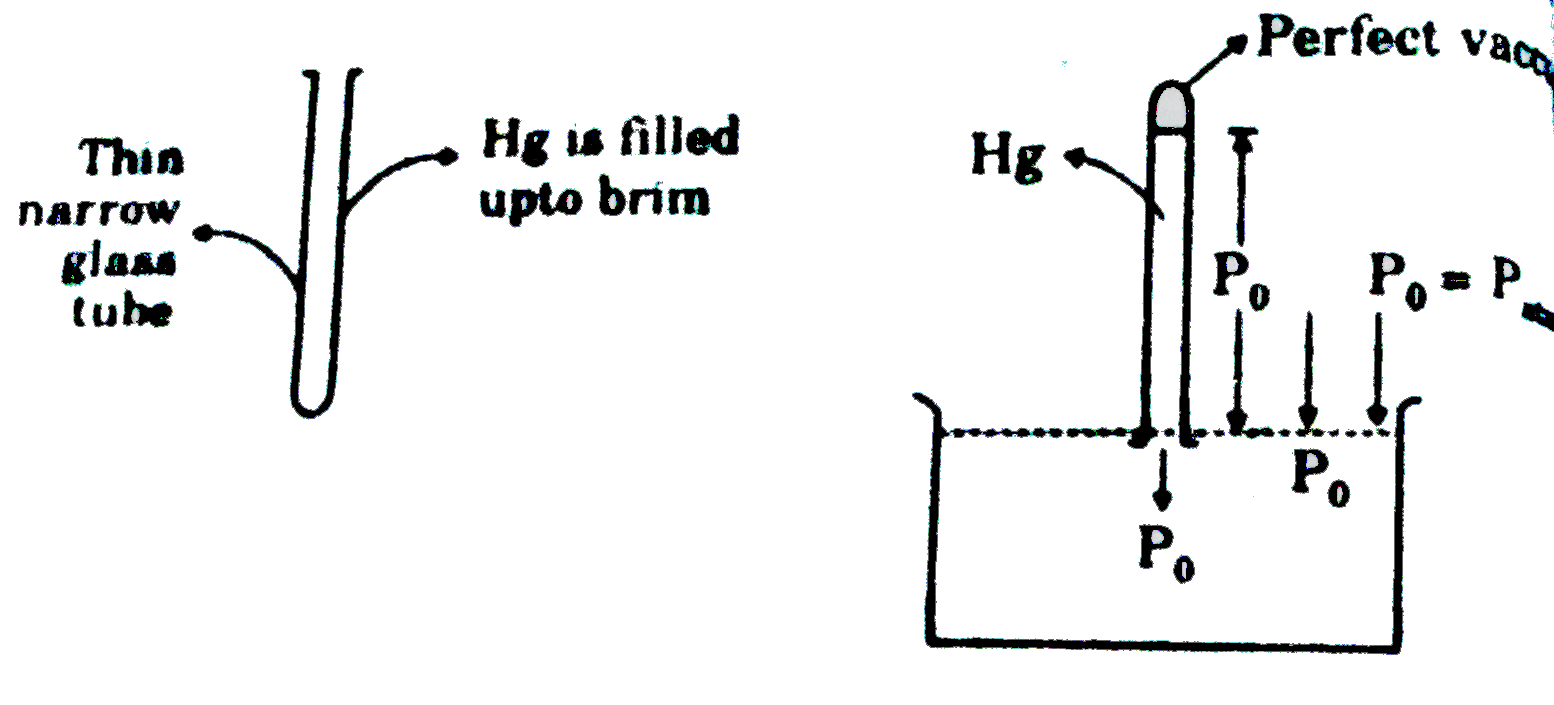
For such a faulty barometer
P0A=mg+PgasA
P0=ρhg+Pgas
or ρgh=P0−Pgas
A tube closed at one end is dipped in mercury as shown in figure such that the closed surface coincides with the mercury level in the container By how much length of the tube should be extended such that the level of Hg in the tube is 5 cm below the mercury level inside the container? (Assume temperature remains constant)
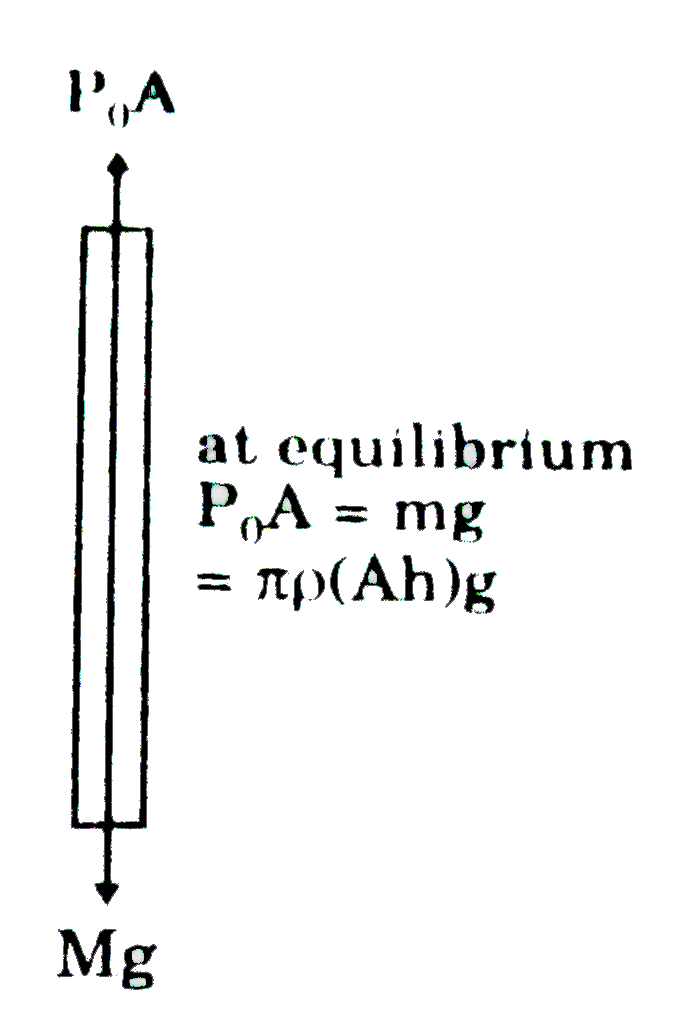
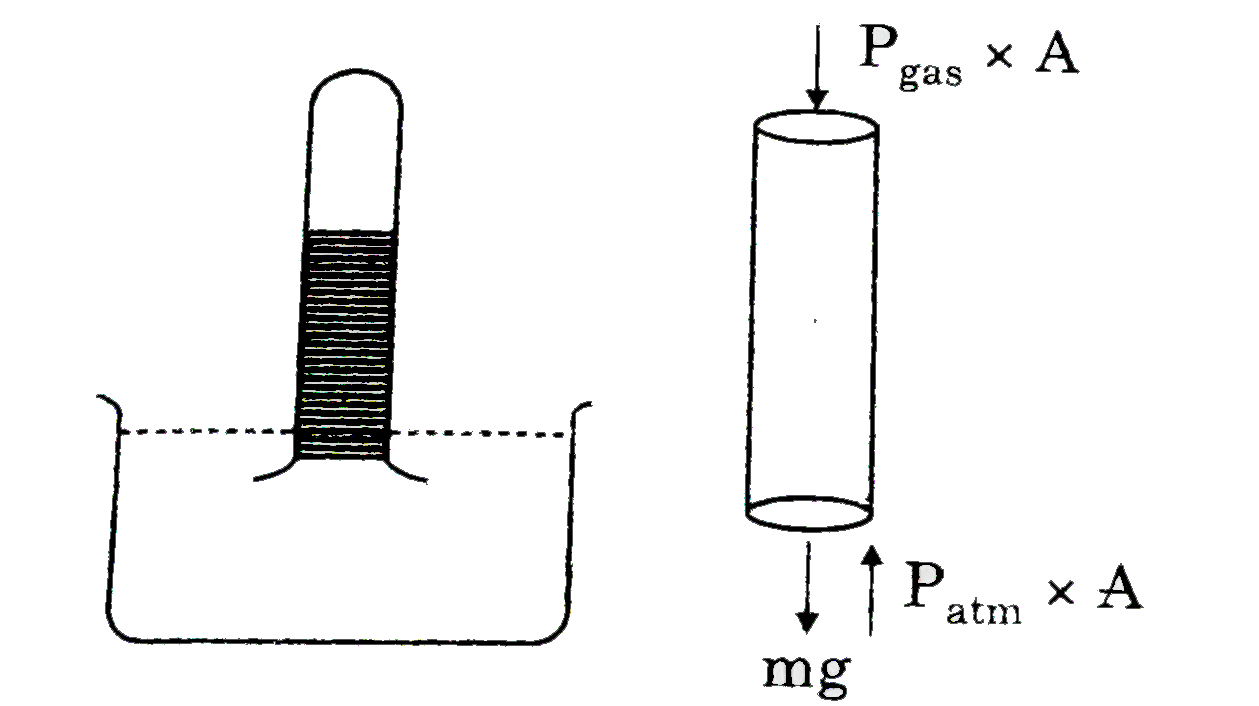
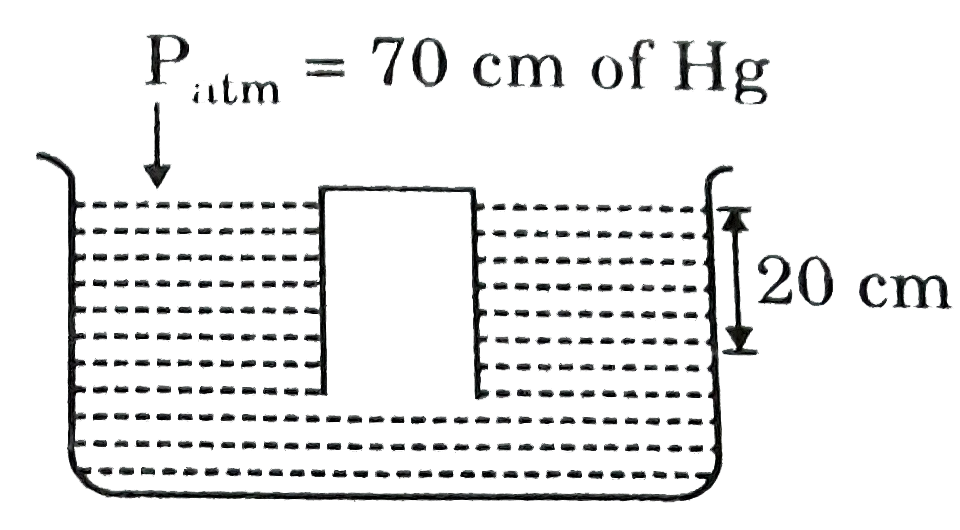 A18 cmB19 cmC24 cmD30 cm
A18 cmB19 cmC24 cmD30 cm - Question 2 - Select One
A barometer is an instrument that is used for the measurement of pressure The construction of the barometer is as follows:
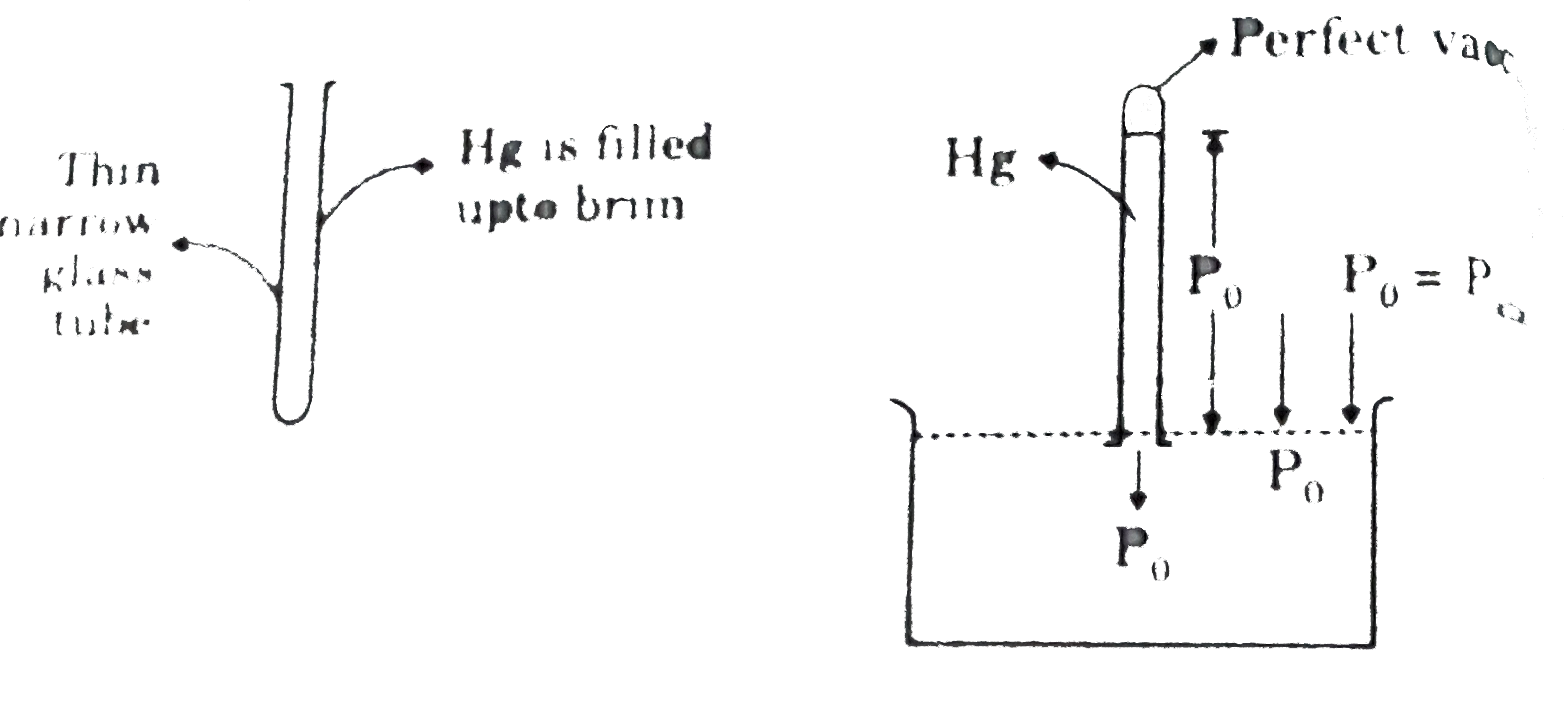
A thin narrow calibrated capillary tube is filled to the brim with a liquid such as mercury and is inverted into a through filled with the same fluid Now depending on the external atmospheric pressure the level of the inside capillary comes to rest, then the net forces on the column should be balanced Applying force balance we get Patm×A=m×g
(A is the cross-sectional area of the capillary tube) if ρ is the density of the fluid, then m=ρ×g×h
(h is the height to which mercury has risen in the capillary)
Hence Patm×A=(ρ×g×h)×AorPatm=ρgh
Faulty Barometer:
An ideal barometer will show a correct reading only if the space above the mercury column is vacuum but in case if some gas column is trapped in the space above the mercury column then the barometer is classified as a faulty barometer. The reading of such a barometer will be less than the true pressure
For such a faulty barometer
P0A=mg+PgasA
P0=ρhg+Pgas
or ρgh=P0−Pgas
If the tube shown below is placed vertically with the open and upward then the length of the air column will be (Assume temperature remains constant)
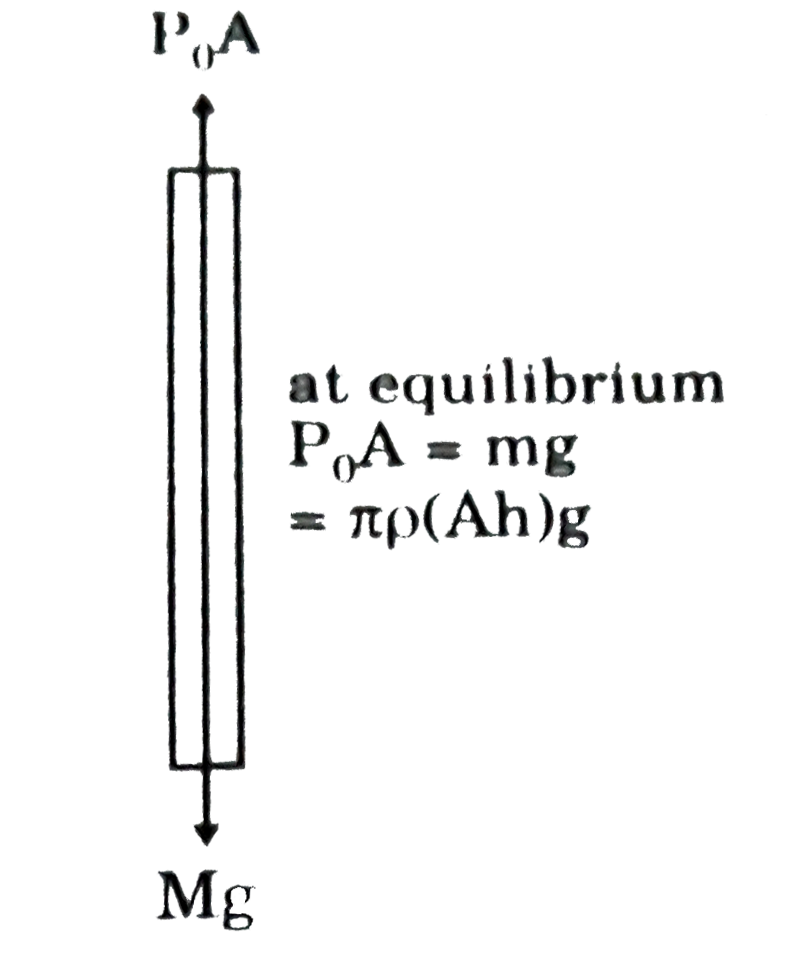
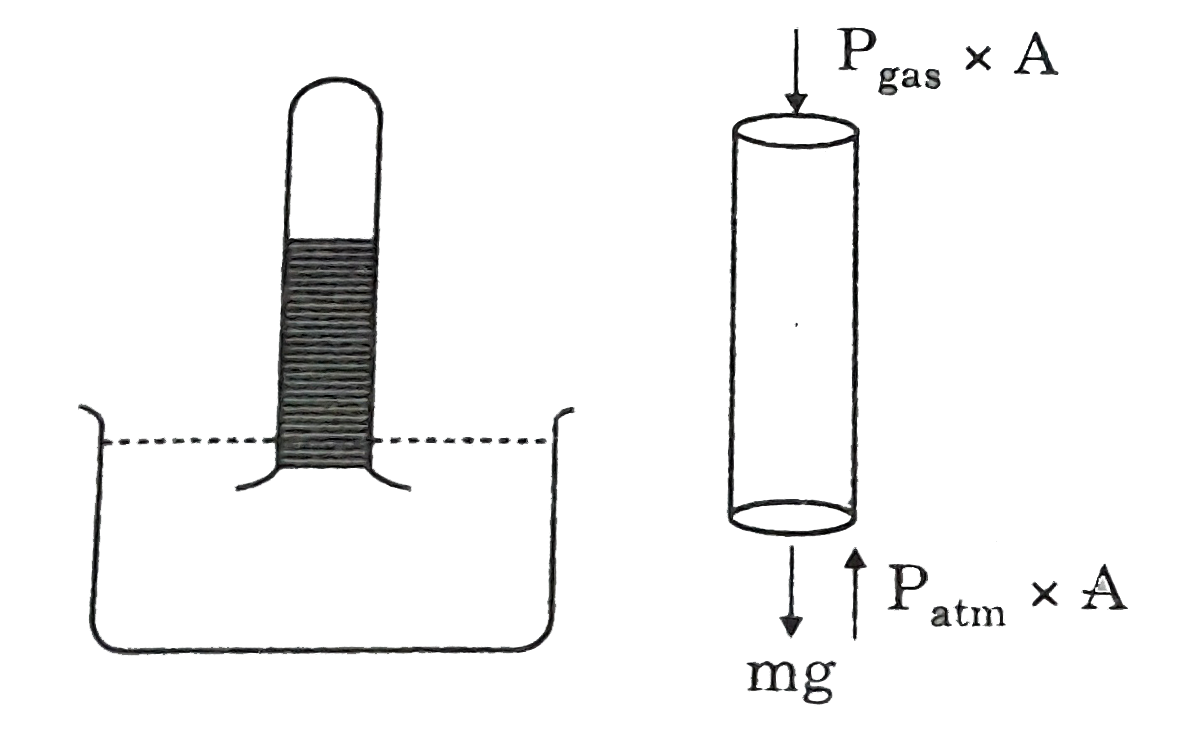
 A20 cmB36 cmC18 cmD15 cm
A20 cmB36 cmC18 cmD15 cm
A barometer tube contains a mixture of air and saturated water vopour in the space above the mercury column. It reads 70cm when the actual atmospheric pressure is 76cm of mercury. The saturation vapour pressure at roon tempature is1.0 cm of mercury, The tube is now lowered in the reservoir till the space above the mercury cloumn is reduced to half its origina volume. Find the reading of the barometer. Assume that the temperature remains constant.
View SolutionThe length of a faulty barometer is 90 cm and there is a little air above the mercury. When the atmospheric pressure is 76cm of Hg it reads 74.8 cm. What will be the true atmospheric pressure if the reading on the barometer is 74.3cm ?
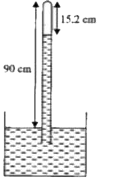 View Solution
View SolutionA barometer kept in an elevator accelerating upward reads 76 cm. The air pressure in the elevator is
View SolutionA barometer kept in an elevator accelerating upward reads 76 cm. The air pressure in the elevator is
View SolutionThe 10% of total volume of the barometer liquid (mercury) contains impurities having an average density 5gcm−3. When this faulty barometer is used to measure the atmospheric pressure it reads 80 cm of the liquid column. Determine the correct atmospheric pressure.
View SolutionThe 10% of total volume of the barometer liquid (mercury) contains impurities having an average density 5gcm−3. When this faulty barometer is used to measure the atmospheric pressure it reads 80 cm of the liquid column. Determine the correct atmospheric pressure.
View Solution
